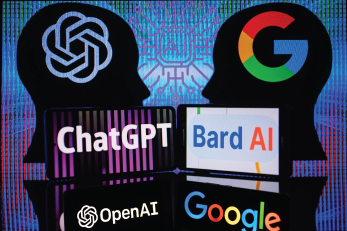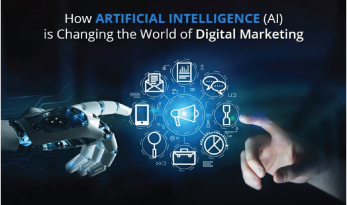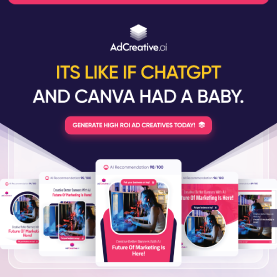Introduction
In the months and years since ChatGPT burst onto the scene in November 2022, generative AI has undergone an unprecedented evolution. Every month introduces new tools, groundbreaking advancements, and regulatory updates, further establishing generative AI as a transformative force in technology. While some reacted to ChatGPT and its successors with skepticism or fear, the tangible benefits of machine learning (ML) and AI are undeniable. From revolutionizing medical imaging analysis to enhancing weather forecasts, these technologies are reshaping industries and daily life.
A 2022 McKinsey survey revealed that AI adoption has more than doubled over the past five years, with investment in AI soaring. Tools like ChatGPT (powered by generative pretrained transformers) and DALL-E (a blend of Salvador Dalí and WALL-E) are transforming workflows across industries. Yet, the full scope of generative AI’s impact remains unknown—as do the potential risks. This blog delves into the current state, applications, and future of generative AI, unpacking its transformative power and the challenges that lie ahead.
What is Generative AI?
Generative AI refers to systems capable of creating new content—text, images, audio, and even code—by learning from existing data. Unlike traditional AI, which focuses on recognizing patterns or solving specific problems, generative AI produces novel outputs, simulating human-like creativity.
Key Components of Generative AI:
- Transformers: The architecture behind models like GPT and DALL-E, enabling them to process and generate sequential data efficiently.
- Large Language Models (LLMs): Trained on vast datasets, these models can understand and generate human-like text.
- Diffusion Models: Used for image generation, they iteratively refine data to create realistic visuals.
Generative AI stands at the intersection of computational power, massive datasets, and advanced algorithms, marking a new era in AI capabilities.
Current Trends in Generative AI (2025)
1. Proliferation of Generative Tools
The generative AI ecosystem has expanded exponentially. Beyond ChatGPT, tools like MidJourney, Stable Diffusion, and Adobe Firefly have democratized access to creative AI solutions, enabling users to generate professional-grade content with minimal effort.
2. Industry-Specific Applications
Generative AI is no longer a generic solution; it’s becoming tailored for specific industries:
- Healthcare: AI-driven tools are assisting in creating personalized treatment plans and synthesizing new drugs.
- E-commerce: Product descriptions, ad creatives, and customer service responses are being automated with generative text.
- Entertainment: Scriptwriting, storyboarding, and content generation are seeing unprecedented automation and innovation.
3. Ethical and Regulatory Developments
Governments and organizations are introducing guidelines to ensure ethical use of generative AI. For example, watermarking AI-generated content and regulating AI’s role in sensitive areas like misinformation prevention.
4. Integration with Everyday Tools
Generative AI is now embedded in commonly used software like Microsoft Office and Adobe Creative Suite, transforming how professionals approach tasks like writing, designing, and data analysis.
Real-World Applications of Generative AI
1. Content Creation and Marketing
- Copywriting and Blogging: Tools like Jasper AI and ChatGPT generate high-quality articles, product descriptions, and ad copies.
- Social Media: Generative AI helps craft engaging posts, hashtags, and multimedia content, optimizing social media campaigns.
2. Healthcare Innovation
- Medical Imaging: AI analyzes and enhances diagnostic images, enabling faster and more accurate diagnoses.
- Drug Discovery: Generative AI predicts molecular interactions, speeding up the drug development process.
3. Education
- Personalized Learning: Generative AI creates tailored learning materials and assessments based on individual student needs.
- Tutoring: AI-driven tutors provide instant feedback and assistance across various subjects.
4. Gaming and Entertainment
- Game Development: AI generates game assets, levels, and storylines, reducing development time.
- Streaming Services: Personalized recommendations and AI-generated content like interactive storytelling are reshaping viewer experiences.
5. Code Generation
- Tools like GitHub Copilot assist developers by generating boilerplate code, debugging, and suggesting improvements, revolutionizing software development workflows.
The Future of Generative AI
1. Towards Artificial General Intelligence (AGI)
While current AI systems specialize in specific tasks, advancements in generative AI could pave the way for AGI, enabling machines to perform a wide range of intellectual tasks with human-like adaptability.
2. Enhanced Human-AI Collaboration
Generative AI will increasingly act as a creative partner, assisting humans in brainstorming, designing, and problem-solving, rather than simply automating tasks.
3. Environmental Applications
AI models are being developed to address climate challenges, such as optimizing energy usage, predicting weather patterns, and designing sustainable systems.
4. Risks and Challenges
While the potential is immense, risks like data privacy, deepfake misuse, and AI biases remain significant concerns. Addressing these issues requires a collaborative approach involving technologists, policymakers, and ethicists.
Preparing for the Generative AI Revolution
1. Adopting AI Tools
Businesses and individuals should embrace generative AI tools to stay competitive. From automating mundane tasks to enhancing creative processes, the benefits are manifold.
2. Investing in Education
Understanding how to use and regulate AI is crucial. Training programs and certifications can help professionals leverage AI effectively.
3. Ensuring Ethical AI Use
Organizations must prioritize ethical AI practices, such as transparency, accountability, and inclusivity, to build trust and mitigate risks.
Conclusion
Generative AI has come a long way since the launch of ChatGPT in 2022, revolutionizing industries and empowering creativity. Its potential to reshape the world is matched only by the challenges it presents. By embracing generative AI responsibly and proactively addressing its risks, we can unlock its full potential for good. The future of generative AI is bright—and we’re only just beginning to explore its possibilities.
Call-to-Action: Share your thoughts on generative AI in the comments below. Subscribe for more in-depth articles on AI trends and innovations.


